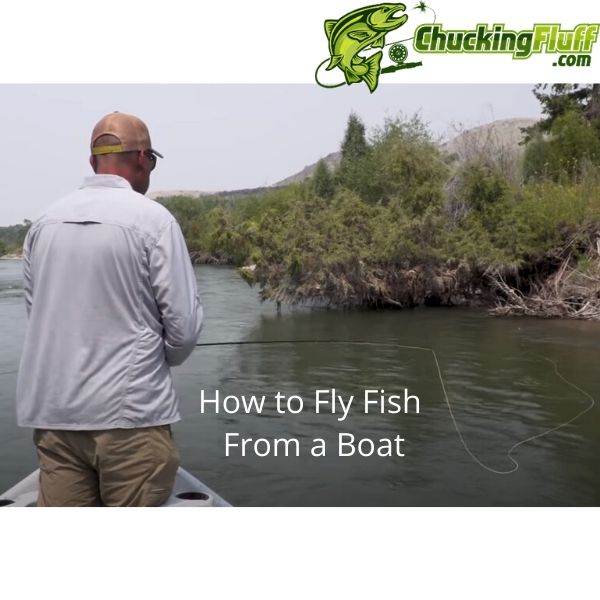| Disclosure: Just to be open and honest the buttons and links you click on in the website will in most cases take you to another website where you can purchase the products I am reviewing. As an Amazon Associate I earn from qualifying purchases. |
Why Do I Keep Losing Fish Fly Fishing – Keep Contact

In the world of angling, even the most seasoned professionals find themselves on the losing end more often than not. Days spent on the water are a testament to the unpredictability of nature’s game. One moment, you’re reeling in prize catches with ease, and in the next breath, they slip away, leaving you wondering what went wrong. Yet, amidst the trials and tribulations of fishing, there exists a group of anglers who never seem to hook a thing.
Perhaps you, too, find yourself pondering the myriad reasons behind your struggle to land that elusive catch. Why is it that despite your best efforts, the fish always seem to slip away? The answer may lie in a delicate balance of factors, from the tension of your line to the choice of your hook, knot-tying techniques, tippet selection, and the artful finesse of the hook set.
Join us as we unravel the mysteries behind the age-old question: Why do I keep losing fish fly fishing?
Quick Post Navigation
Why Do I Keep Losing Fish Fly Fishing?
While there are experts at guiding, fly tying, and casting, there are pros as losing fish and the majority fall in the latter category.
But today we dive into the reasons why you aren’t getting things right.
Hook it Right
It seems tiny but the hook is one of the biggest reasons the fish are getting on and off and you have no tugging experiences or pictures of netted fish.
Get that guy sharp if yours is blunt.
It is normal to have blunt hooks after several fish catches or snags, especially during nymphing because your gear hits on branches and pebbles under the water.
The hook gap and size are crucial for nymphing.
You want it slightly open and a split bead head is a good determinant of size as it is movable while tying.
Avoid tying bigger bead heads for the hook size you want.
Though knot tying varies, there are bead sizes and hook sizes for compatibility that you should follow to prevent hurting fish during play and losing them back into the water.
How strong your hook is matters a lot depending on the situations you will take it through.
Consider the size of fish in that area, the river and its current, and if it has clutter.
Finer hooks mean that they’ll get into a fish’s mouth with ease.
Your Fly Rod Isn’t Just a Stick
There are general fly rods and there are specialized poles for different species and techniques.
The former needs an experienced angler to handle but overall the rod’s power and action are critical for great performance with getting the catch closer.
The market is flooded with different options when it comes to brands, quality, and price.
Here is the general rule of thumb: smaller fish need less powerful rod actions.
Average trout sizes of 7 to 16 inches will need power ranging between 3/4 and 4 but you’ll go higher to 4/5 for salmonids.
For the action, regardless of the power, a more moderate stick will mean it will hardly cause the hook to get off because there will be no hard points as you pull to prevent you from losing your catch.
Fight Management is a Thing
You can hook a fish and fail to manage the fight – that’s how you lose the guy.
If you feel like the catch is massive, be prepared to greatly reduce the risks.
Lines might have more tension and you could lose a fish by opening your hook releasing it from its mouth or ripping fish flesh.
Once you notice a strike, take the right position and be downstream from your catch.
The fish might bolt downstream with the current; follow it and get the best position downstream.
That allows you to bring that guy to your net and smart fly fishers use the water current to their favour.
The fly rod should be up and very straight to help you absorb headshakes.
This is crucial when the catch is approaching the net because this close movement makes the line’s elasticity drop greatly increasing the hook and tippet’s tension.
You want to adjust the length of the line for successful netting.
Avoid keeping too much line as it forces you to pull the rod too much until you get a vertical position.
If this happens, the rod doesn’t work effectively in the position and increases the chances of losing a fish.
Besides it can cause the rod tip to break.
FAQs – Why Do I Keep Losing Fish Fly Fishing?
There is so much that can cause expert fly casters to lose a fish and could be knowingly or unknowingly.
We try to counter aspects that we can and blame karma for bad days.
Here are brief answers to common questions on why fly fishers can lose a fish in the act.
Q) Do You Lose More Fish Euro-Nymphing?
A) It depends on your timing techniques because the time between the fish taking a nymph and you striking should be very short.
Prompt reaction means your strike will be very efficient and don’t forget to have your rod at 90 degrees and down to 45 degrees as you drift to maintain the reaction.
Q) Is Presentation Important to Avoid Losing Fish Fly Fishing?
A) Yes, you always want your sly to drift naturally without drag to increase the take regardless of the technique you are using.
Studying fish behavior can help you know the size of the fly to use.
Q) Should I Match My Flies to Catch More Fish?
A) Yes, that is the basic knowledge you need when collecting flies for a specific location.
Get your imitations right and watch the conditions to improve the take quality.
Conclusion
In the pursuit of fly fishing glory, the path to success is fraught with obstacles, both seen and unseen. From the nuances of rod action to the subtleties of presentation, every element plays a vital role in the delicate dance between angler and fish. It’s not merely a matter of casting a line and hoping for the best; it’s a symphony of skill, strategy, and sheer determination.
So, why do you keep losing fish fly fishing? The reasons may be as varied as the fish themselves. It could be a matter of mismatched gear, flawed technique, or simply a stroke of bad luck. Yet, armed with knowledge and perseverance, every angler has the power to turn the tide in their favor.
As you venture forth into the waters once more, may you find solace in the wisdom gleaned from your past losses, and may each missed opportunity serve as a stepping stone toward greater success in the art of fly fishing. Tight lines, fellow anglers, and may your next catch be the one that doesn’t get away.


